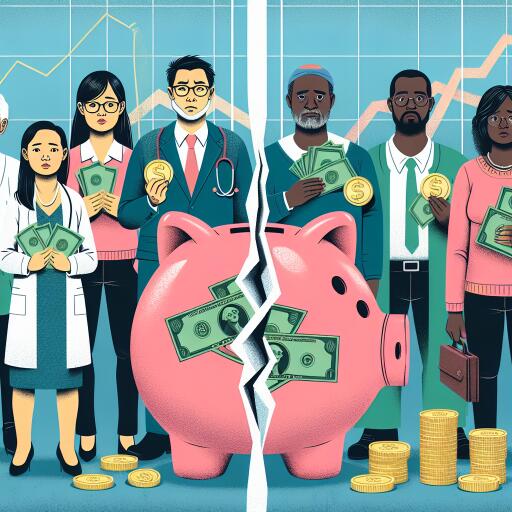Understanding the Retirement Savings Dilemma for Middle-Class Americans
In an unsettling trend, nearly half of middle-class workers in the United States are finding themselves in a precarious situation when it comes to planning for their golden years. According to a recent survey by Primerica, 46% of middle-income families have begun to cut back or even completely cease contributions to their retirement funds. The main antagonist in this narrative? The relentless rise in inflation that’s been chipping away at their financial stability.
As of April 2024, the Consumer Price Index (CPI)—a measure used to evaluate the average change over time in the prices paid by urban consumers for a market basket of consumer goods and services—had experienced a 3.4% increase from the previous year. This uptick is mirrored in essential categories such as food, which saw a 2.2% rise, and shelter costs, which jumped by 5.5%.
The effects of these increases are palpable among middle-income households, a staggering 67% of whom report their earnings are not keeping pace with the escalating cost of living. This financial pressure has led 36% of surveyed individuals to rely more heavily on credit cards to manage day-to-day expenses.
This shift away from saving for the future could have dire consequences for long-term financial health. Pausing or reducing retirement contributions might seem like a stopgap solution to immediate financial strains, but the long-term impact could mean a significant shortfall in retirement savings, due to missed opportunities for compound growth.
Consider the implications: opting out of a $3,000 annual contribution to your retirement savings can translate into a $30,000 deficit over 30 years, assuming an average 8% annual return on your investments. This calculation doesn’t even factor in potential employer matches in 401(k) plans, which could effectively double the loss to $60,000 over the same period.
Despite the grim outlook, there is a silver lining. With inflation expected to stabilize, there’s hope that middle-class Americans could find some respite from the financial squeeze, potentially making room in their budgets to resume or increase retirement fund contributions. Furthermore, anticipated interest rate adjustments by the Federal Reserve could lower the cost of borrowing, further alleviating financial stress.
However, with only 21% of those surveyed by Primerica feeling optimistic about their financial prospects in the upcoming year, it’s clear that immediate solutions are required. For many, consulting a financial advisor could be a critical step towards navigating these challenging times. By devising a tailored savings strategy, individuals can better position themselves to weather the current economic storm.
Exploring opportunities within the gig economy might also provide a viable avenue for boosting income. Engaging in side hustles can offer the dual benefit of covering immediate expenses while enabling contributions to an IRA or 401(k), thereby securing a safety net for both present needs and future retirement goals.
In conclusion, while the current climate presents significant challenges for middle-class Americans striving to save for retirement, navigating these obstacles with strategic planning and financial guidance can pave the way towards achieving long-term financial stability and peace of mind.
